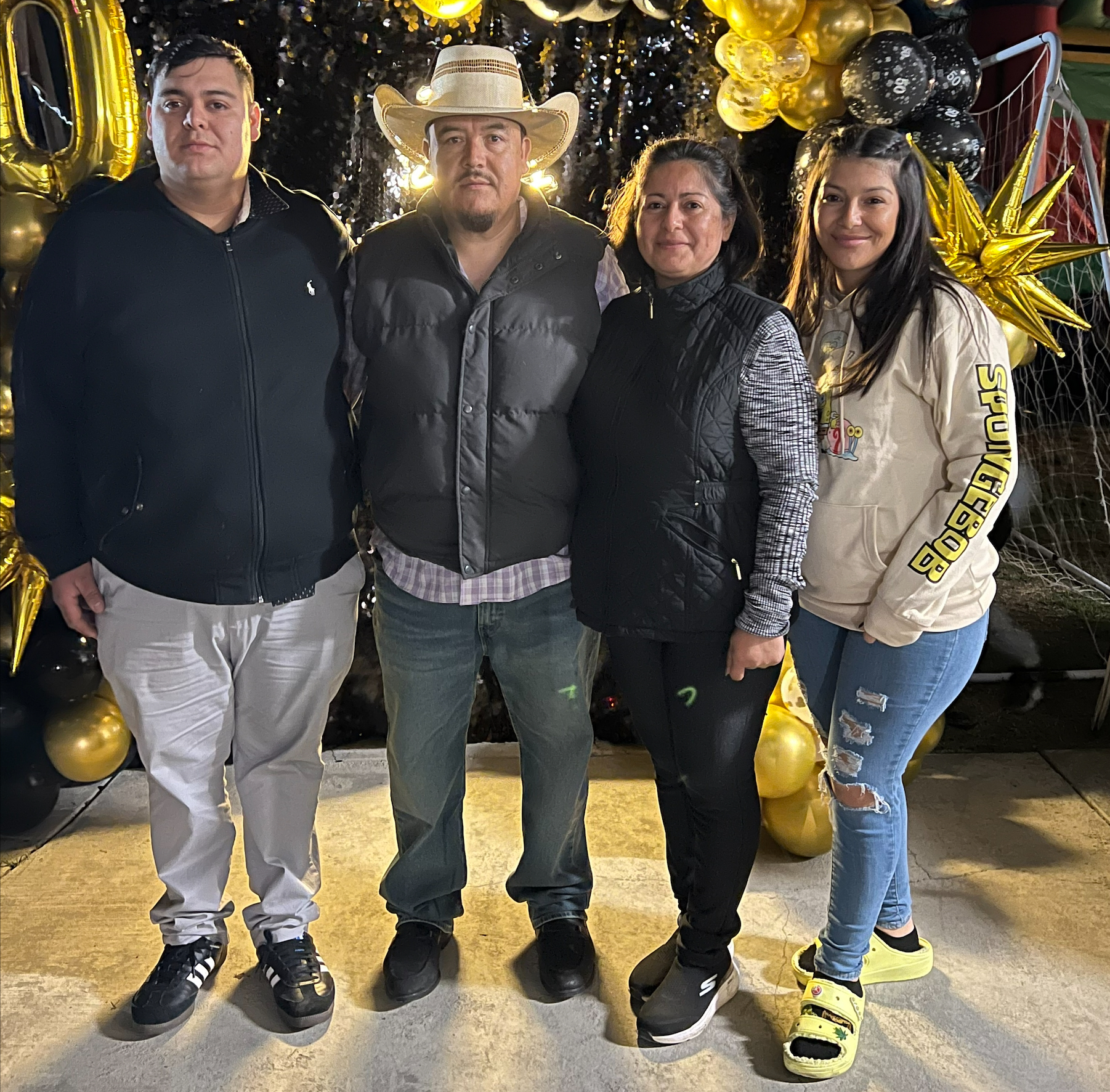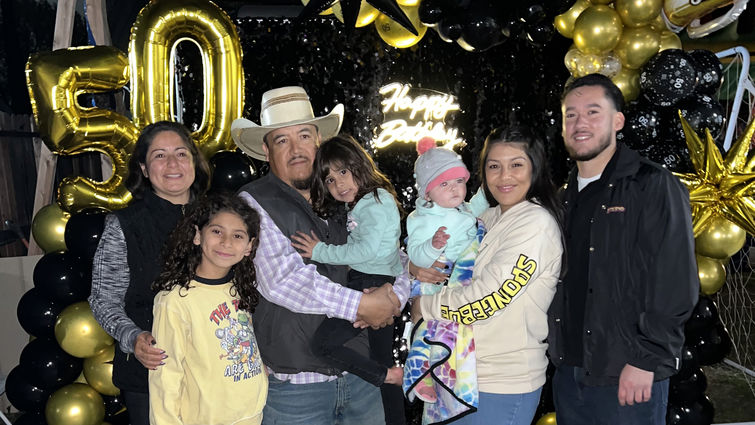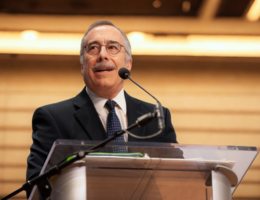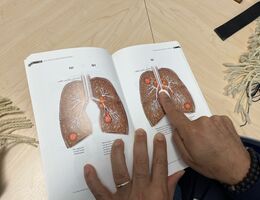

Ramiro Brito Sanchez celebrates his 50th birthday surrounded by loved ones, including his wife, children, and grandchildren.
Significant advances in the treatment of stomach cancer (also called gastric cancer) have lowered death rates and improved survival in U.S. patients over the past 50 years, according to the National Cancer Institute. Ongoing efforts to improve treatments' effectiveness have allowed patients like 50-year-old Ramiro Brito Sanchez to receive combinations of chemotherapy, immunotherapy, and minimally invasive surgery in recent years. In his final stretch of treatment, Brito Sanchez has experienced the best possible response so far, says Jukes Namm, MD, a surgical oncologist at Loma Linda University Cancer Center.
Although less prevalent than before, stomach cancer still affects tens of thousands of Americans annually — predominantly Asian and Hispanic populations. Stomach cancer is often diagnosed after it has already spread, making it difficult to treat, says Namm. There is no standardized screening program for stomach cancer in the U.S. Moreover, Namm says stomach cancer symptoms are often vague (so people may ascribe them to benign conditions like heartburn or gastric reflux) or non-existent in early stages, only becoming apparent when the cancer has grown very advanced, says Namm.
Read: How to best protect yourself from two hard-to-spot cancers
For Brito Sanchez, however, the symptoms appeared early, and he acted immediately. He sought medical care in February 2023 when he experienced stomach pains, nausea, lowered appetite, and difficulty eating. His local clinic prescribed an antacid (medication for heartburn and indigestion), but his symptoms persisted. He returned a month later and underwent testing, including imaging and an esophagogastroduodenoscopy (EGD), that identified a three-centimeter tumor in his stomach.
“I took it [the news] seriously, but calmly, so as not to alarm my family,” says Brito Sanchez (translated from Spanish), a husband, father of two, and grandfather of four.
The stomach cancer was a high-grade, aggressive type, says Namm, but the good news is that Brito Sanchez and the doctors still caught it early before it spread to other parts of the body. Brito Sanchez started treatment with a combination of chemotherapy and immunotherapy. Chemotherapy attacks rapidly dividing cancer cells, while immunotherapy drugs help the body's immune system fight the cancer.
In recent years, immunotherapy drugs called immune checkpoint inhibitors (PD-1 inhibitors) have helped treat many types of advanced cancer, says Namm. The medical community is still investigating whether these drugs might be helpful earlier in the course of treatment or if combining them with other drugs might be beneficial.
I hope to continue to fight, be well, and live a normal life with my family.Ramiro Brito Sanchez
After completing chemotherapy and immunotherapy, Brito Sanchez partnered with Namm to undergo a minimally invasive procedure to remove two-thirds of the stomach — called a laparoscopic distal subtotal gastrectomy — in August 2023. By using special techniques and instruments, experts performing the procedure can access the abdomen without making large incisions while achieving the same outcomes as traditional surgical approaches. Patients who undergo the minimally invasive procedure are more likely to experience shorter hospital stays, faster recovery, less pain and bleeding after the operation, and reduced scarring.
Brito Sanchez recovered remarkably well and achieved a complete pathological response to his treatment — meaning pathologists did not detect any cancer cells in the part of his stomach or lymph nodes that were surgically removed.

Ramiro Brito Sanchez's wife and children celebrate with him on his 50th birthday.
“We can extrapolate that if there are no cancer cells left in the primary site, then there’s a good chance that any potential cancer cells floating around somewhere else in the body had also been eradicated by treatment,” Namm says. “This portends an excellent prognosis.”
Since surgery, Brito Sanchez has begun the final stretch of treatment — a few more cycles of chemotherapy and immunotherapy — to ensure the cancer is eradicated. He says he is grateful for Namm’s surgical expertise and the Cancer Center team’s attentiveness throughout his hospitalization. He lives in Fontana with his family and hopes to travel with them after treatment.
“I hope to continue to fight, be well, and live a normal life with my family,” Brito Sanchez says. “It is not a good thing to be afraid of cancer. Talking with family and friends is very good therapy.”
Namm says Brito Sanchez’s journey illustrates important messaging during November’s Stomach Cancer Awareness: tune into the body, seek medical care for persistent unusual symptoms, and know that new treatment approaches constantly improve outcomes and offer patients hope.
At Loma Linda University Cancer Center, physicians are committed to providing patients with compassionate, comprehensive, and personalized care that gives them the best opportunity to diagnose and overcome cancer. To learn more about all of the resources offered to patients at the Cancer Center, visit lluh.org/cancer-center or call 1-800-782-2623 to make an appointment.


